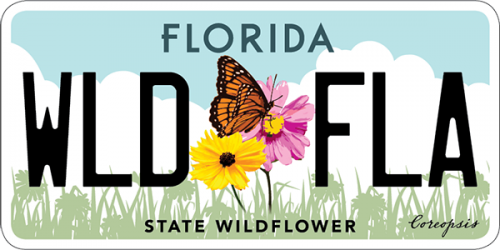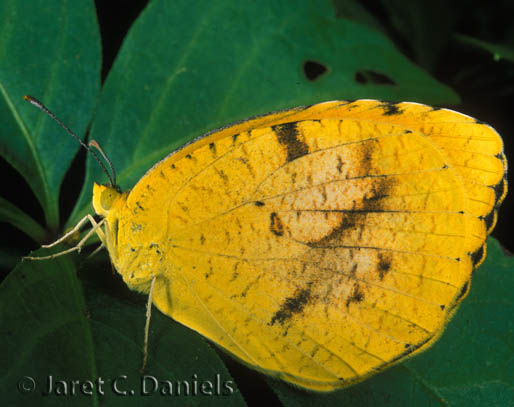- Family name: Pieridae/Whites and Sulphurs
- General description: orange in males to yellow-orange in females with irregular black wing margins; forewing with small black cell spot. Ventral hindwing seasonably variable; summer form (wet season) individuals yellow with darker pattern elements; winter form (dry season) individuals reddish-brown with darker pattern elements.
- Field Marks: orange with irregular black wing margins
- Sexes: appear similar
- Wingspan: 35-50 mm
- Life Cycle: Egg: whitish-yellow, spindle-shaped, laid singly on host leaves Mature larva: green with narrow lateral white stripe Chrysalis: green to black
- Number of Generations: multiple
- Flight Season: All year
- Abundance: Common
- Habitat: disturbed sites, fields, roadsides, agricultural land
- Larval Host Plants: Sicklepod senna (Cassia obtusifolia), coffee senna (Cassia occidentalis),
- Similar Species:
- Additional Information: Adults overwinter in reproductive diapause. Range is limited in Nevada, New Jersey, Rhode Island, Connecticut, Pennsylvania, New York, Massachusetts, Illinois, Indiana and Ohio.
- Range in Florida
 The Florida Wildflowers & Butterflies projects at the Florida Museum are sponsored in part by the State of Florida and the Florida Wildflower Foundation, Inc.
The Florida Wildflowers & Butterflies projects at the Florida Museum are sponsored in part by the State of Florida and the Florida Wildflower Foundation, Inc.
